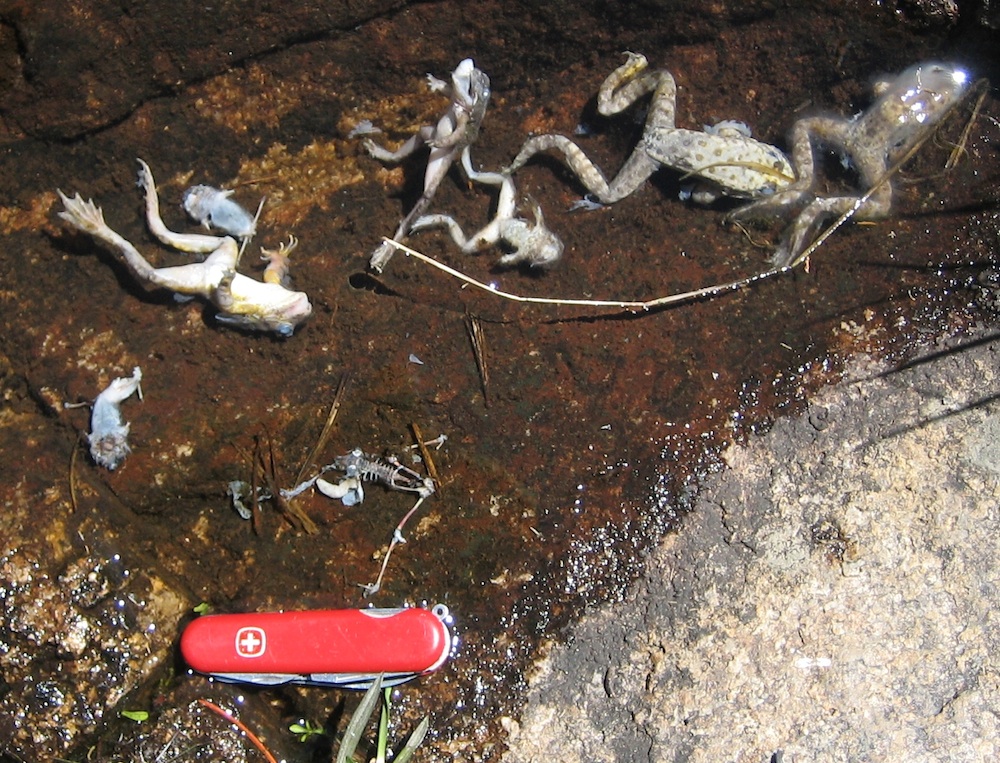Frog Fungus Causes Grisly Death by Dehydration

A fungus that has torn through frog populations worldwide kills by dehydrating the hapless amphibians, disrupting electrolyte balance and causing cardiac arrest.
The fungus Batrachochytrium dendrobatidis, which is responsible for chytridiomycosis disease, has caused massive frog death on a global scale, threatening many species with extinction. When the fungus reached the Sierra Nevada mountains in California, it slashed mountain yellow-legged frog populations by more than 75 percent in only about four years. The frog (Rana muscosa) is now listed as endangered.
Laboratory experiments had established how the fungus operates, but a new study is the first to observe the disease in action in the wild. San Francisco State University biologist Vance Vredenburg and colleagues collected blood samples and skin swabs from more than 100 yellow-legged frogs over the course of the summer of 2004, the year the outbreak hit the Sierra region.
"It's really rare to be able to study physiology in the wild like this, at the exact moment of a disease outbreak," study researcher Jamie Voyles, a University of California Berkeley ecologist, said in a statement. The researchers reported their work Wednesday (April 25) in the journal PLoS ONE.
The findings confirmed what researchers had seen in the lab: Infection by the fungus seems to disrupt the frogs' balance of fluids and electrolytes, which are minerals found in the blood that are crucial for muscle function, proper blood pH and hydration.
"The mode of death discovered in the lab seems to be what's actually happening in the field," Vredenburg said in a statement, "and it's that understanding that is key to doing something about it in the future."
In the lab, the disease is easy to treat with antifungal drugs, Vredenburg said. But transferring that treatment to the wild is difficult. Biologists are now experimenting with ways to treat wild frogs. The new research suggests that treating individual frogs with electrolyte supplements could offer a glimmer of hope for survival, Vredenburg said.
Sign up for the Live Science daily newsletter now
Get the world’s most fascinating discoveries delivered straight to your inbox.
Researchers are also working to understand how the disease spreads in the wild. Pacific chorus frogs may be carriers of the disease, according to research published in March in the journal PLoS ONE.
You can follow LiveScience senior writer Stephanie Pappas on Twitter @sipappas. Follow LiveScience for the latest in science news and discoveries on Twitter @livescience and on Facebook.

Stephanie Pappas is a contributing writer for Live Science, covering topics ranging from geoscience to archaeology to the human brain and behavior. She was previously a senior writer for Live Science but is now a freelancer based in Denver, Colorado, and regularly contributes to Scientific American and The Monitor, the monthly magazine of the American Psychological Association. Stephanie received a bachelor's degree in psychology from the University of South Carolina and a graduate certificate in science communication from the University of California, Santa Cruz.









